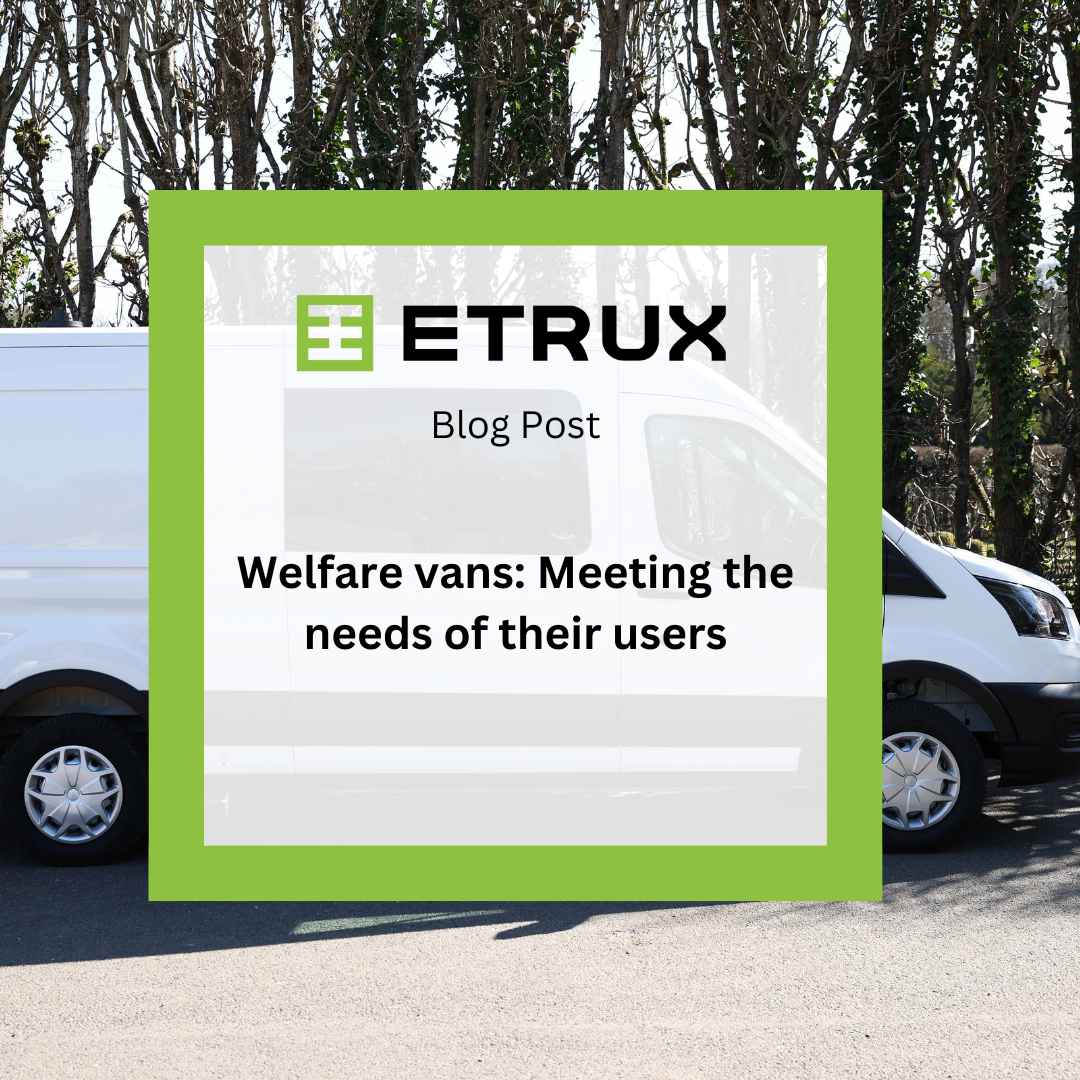We have all been there. One too many coffees and too many miles to the next pit stop or on a job with no access to basic amenities. These are only some of the challenges faced by employees and volunteers when working off site.
In this month’s blog post we discuss welfare vans, what they are, who uses them and the benefits they can offer companies. So, let’s start with the basics… what is a welfare van?
What is a Welfare Van?
With a welfare van the clue is in the name. Often designed with a customer in mind the van can provide a WC, a kitchenette and a comfortable place to relax when access to amenities is an issue. They can usually seat up to seven passengers.
Who uses a Welfare Van?
Widely used by the construction industry, highway maintenance, utilities, media organisations and even emergency services such as search and rescue when at the scene of an incident, these vehicles are an essential mobile welfare solution for many organisations.
Electric Versus Diesel
There are a number of factors that will determine which type of engine is the most suitable and efficient option for your business. These include:
- Access to charging infrastructure
- How many miles you cover in a day
- Payload requirements
- Affordability
The biggest advantage of EV is the savings on running costs. While electric vans are usually more expensive to buy than their diesel counterparts, this initial cost can be offset by factoring in the whole life cost of the vehicle. E-Transits are more economical due to lower prices for road tax, electricity and servicing and with the added bonus of not having to worry about low-emission zone charges!
Businesses are under increasing pressure to meet the UK governments mandate by 2035 and as a result they are now looking to opt for electric vehicles which helps reduce their carbon impact. Many companies as they look at their own ESG strategy have also recognised the need to reduce their own environmental impact and reduce carbon emissions and have done so by introducing an electric fleet.
The Ford E-Transit
One manufacturer that has aggressively targeted the 3.5t electric commercial market is Ford with the launch of the new Ford E-Transit in 2022. Powered by a large 400-volt 68kW battery, the Ford E-Transit has been praised for its impressive range of up 196 miles (WLTP test results). In-service trials have demonstrated up to 160 miles on fully converted E-Transit welfare vans. In fact, the E-Transit has won multiple awards for Best Electric Van and Best Large Van since its launch in February 2022, and more recently Best Zero Emission Large Van, at the 2023 Fleet News Awards.
In a recent review by the Green Car Guide, they reported that “the Ford E-Transit is a much better drive than the diesel Ford Transit. The E-Transit is quiet with responsive acceleration, an independent rear suspension, and even the ride quality is good.” Commercial van specialist, Parkers also reported that the E-Transit is more refined with a greater low-down torque, which makes them nicer to drive.
Customised Welfare Van
If you are considering a welfare van for your business, it’s time to talk to the experts.
With depots in England and Ireland, ETRUX is a trusted expert in welfare van conversions. Our design engineers work with our customers to develop innovative conversions that meet all Type Approval regulations specifications providing a safe and robust solution without compromising on comfort.
With a number of E-Transit Welfare vans currently in build don’t hesitate to contact our team today to arrange a demo and let us help you to get your fleet on the road to zero.

